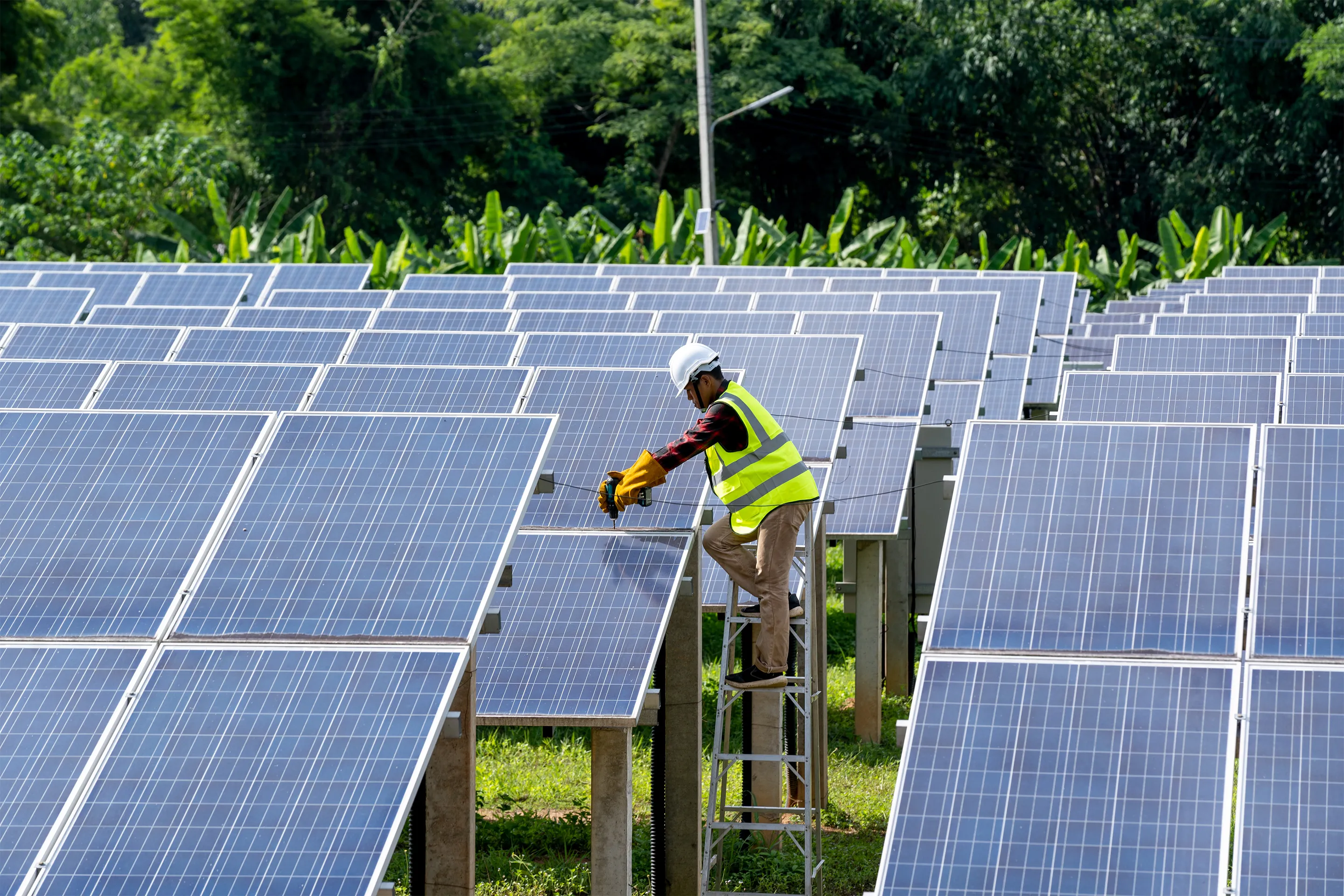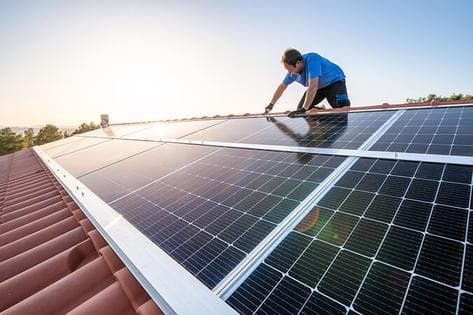Facts About Solar Panel Installation Virginia Revealed
Facts About Solar Panel Installation Virginia Revealed
Blog Article
Virginia Solar Panel Company: Lumina Solar Focuses On Providing Advanced Photovoltaic Solutions For Homes And Services
History and Founding
Have you ever wondered how a solar panel business springs from a simple trigger of motivation into a powerhouse of renewable resource? It often begins with a vision-- one fueled by a mix of innovation, decision, and a pinch of serendipity. The journey of many solar business mirrors the evolution of the technology itself: from large, ineffective panels to smooth, high-efficiency marvels utilizing the sun's bounty.
The Early Days
In the late 20th century, when solar power was still a niche principle, pioneers planted seeds for what would end up being a worldwide movement. Envision a little workshop filled with curious engineers, tirelessly explore photovoltaic cells. Their passion was palpable, typically driven by a desire to combat environment change and reduce reliance on fossil fuels.
One such anecdote has to do with a creator who, inspired by an outdoor camping journey, understood that even in remote locations, the sun could power essential gadgets. This simple observation triggered a company's objective to equalize access to clean energy.
Establishing Principles

- Development: Constantly pushing the limits of solar innovation to improve effectiveness and sturdiness.
- Sustainability: Devoting to eco-friendly manufacturing and lowering carbon footprints.
- Availability: Making renewable resource services budget friendly and useful for daily users.
Milestones in Development
| Year | Key Event |
|---|---|
| 1985 | Business established in a small garage, concentrating on research study and advancement. |
| 1995 | Business solar panel item introduced, acquiring regional attention. |
| 2005 | Broadened to worldwide markets, accepting worldwide renewable resource goals. |
| 2015 | Introduced innovative photovoltaic panel innovation with enhanced energy conversion. |
Isn't it interesting how these incremental steps, frequently neglected, form the energy landscape today? The photovoltaic panel company story is not almost innovation; it has to do with a relentless mission for a brighter, cleaner future.

Innovations in Solar Panel Technologies
Ever noticed how some photovoltaic panels gleam brighter and last longer? It's not magic; it's the science of photovoltaic effectiveness. Modern photovoltaic panel companies invest heavily in technologies like bifacial cells, which record sunshine from both sides, enhancing energy harvest without expanding roof area. Have you ever questioned why some panels carry out better on cloudy days? That is because of advances in thin-film solar technology, which thrives under diffused light conditions.
Item Variations Tailored to Distinct Requirements
One size never ever fits all. Photovoltaic panel service providers now use:
- Monocrystalline panels for maximum effectiveness and sleek looks, perfect for space-constrained rooftops.
- Polycrystalline panels, which offer a cost-effective alternative without compromising too much output.
- Building-integrated photovoltaics (BIPV), merging solar tech perfectly into architectural components like windows and facades.
Selecting the ideal product isn't almost in advance expense; it's about matching your environment, energy objectives, and long-term savings. For instance, homes shaded by trees require panels that master low-light circumstances, something many neglect till energy costs climb up unexpectedly.
Technical Tips for Optimum Selection
- Evaluate the temperature coefficient-- lower values mean panels lose less effectiveness on hot days.
- Look for panels with improved anti-reflective coatings to optimize light absorption.
- Consider the panel's warranty not simply for defects, but for guaranteed power output over decades.
- Don't undervalue the significance of the inverter innovation coupled with the panels; it can make or break your system's efficiency.
Beyond Panels: Emerging Patterns
Picture photovoltaic panels that adjust their angle instantly to chase the sun-- tracking systems are ending up being more available, increasing yield significantly. Or solar tiles that read more blend undetectably into your roofline, transforming your home into a silent, self-sufficient power generator. These developments are reshaping what a solar panel company provides-- not simply products, however integrated energy services.
Market Presence and Global Operations
Ever wonder why some solar panel companies seem to grow up in every corner of the world while others hardly make a ripple? The distinction lies not just in innovation but in mastering the art of browsing varied markets. Broadening internationally resembles planting seeds in various climates-- you need to understand each environment's special conditions to thrive.
Take, for circumstances, the intricate dance of logistics and supply chain management. Delivering panels halfway throughout the world isn't practically range; it's about timing, customs, tariffs, and adjusting to local need fluctuations. A company with robust global operations prepares for these variables, guaranteeing panels get here on schedule without pumping up costs. This foresight is no small feat and often separates market leaders from followers.
Secret Strategies for Expanding Market Existence
- Localized manufacturing: Developing production centers near target audience reduces shipping delays and import complexities.
- Strategic collaborations: Teaming up with regional firms accelerates market penetration and constructs trust.
- Adaptive item design: Tailoring solar panel tech to weather, sun strength, and facilities subtleties enhances performance and approval.
What about the human element? Photovoltaic panel companies running internationally must fix up cultural differences and regulative subtleties without losing sight of their core objective. For example, what operate in a sun-drenched desert may fail in a humid coastal area. Often, the most innovative option is simply listening-- taking in local insights to refine technology and approach.
Experts frequently encourage a phased rollout rather than a shotgun growth. Why run the risk of overextension when determined growth builds sustainable momentum? Scaling wisely suggests balancing aspiration with operational strength - Best Solar Panel Company Virginia. After all, in the race for sustainable energy supremacy, persistence can be as valuable as speed
Environmental Impact and Sustainability Practices
When photovoltaic panels initially emerged, many presumed they brought absolutely no ecological baggage. Nevertheless, the truth is more nuanced. The production of solar batteries includes rare earth metals and energy-intensive procedures, which can leave a sizable carbon footprint before the panels even reach rooftops. The real ecological cost depends heavily on the sustainability practices used by the solar panel company throughout the lifecycle of their products.
How frequently do we pause to consider what happens to solar panels at the end of their helpful life? Unlike batteries or electronic devices, solar panels can last 25-30 years, but disposal and recycling paths remain underdeveloped in lots of regions. A company dedicated to lowering ecological damage will have a robust plan for recycling photovoltaic materials, salvaging valuable silicon, glass, and metals to prevent land fill build-up.
Key Sustainability Techniques
- Utilizing low-impact production techniques that decrease water and energy intake.
- Implementing closed-loop systems to recycle production waste back into brand-new panels.
- Taking part in transparent supply chain audits to ensure ethical sourcing of basic materials.
- Creating panels for easier disassembly to help future recycling efforts.
It deserves noting that some solar business have originated ingenious approaches, such as incorporating naturally degradable components or using less toxic chemicals throughout fabrication. This not just lowers environmental strain but also sets a precedent for the market. The concern stays: can the solar industry genuinely pivot towards a circular economy model without sacrificing performance or price?
Expert Tips for Assessing Sustainability
- Inquire about the business's commitment to carbon-neutral manufacturing and whether they offset emissions.
- Investigate if they partner with accredited recycling centers devoted to solar panel waste.
- Look for transparency reports detailing environmental effects and sustainability goals.
- Consider the durability and service warranty of panels as an indirect procedure of resource efficiency.
In the end, going with solar energy needs to imply more than just slashing electricity expenses; it's about supporting a future where energy is collected properly and waste is thoughtfully managed. Solar panel companies that embrace this approach not just illuminate homes but also cast a brighter light on sustainable innovation.
Report this page